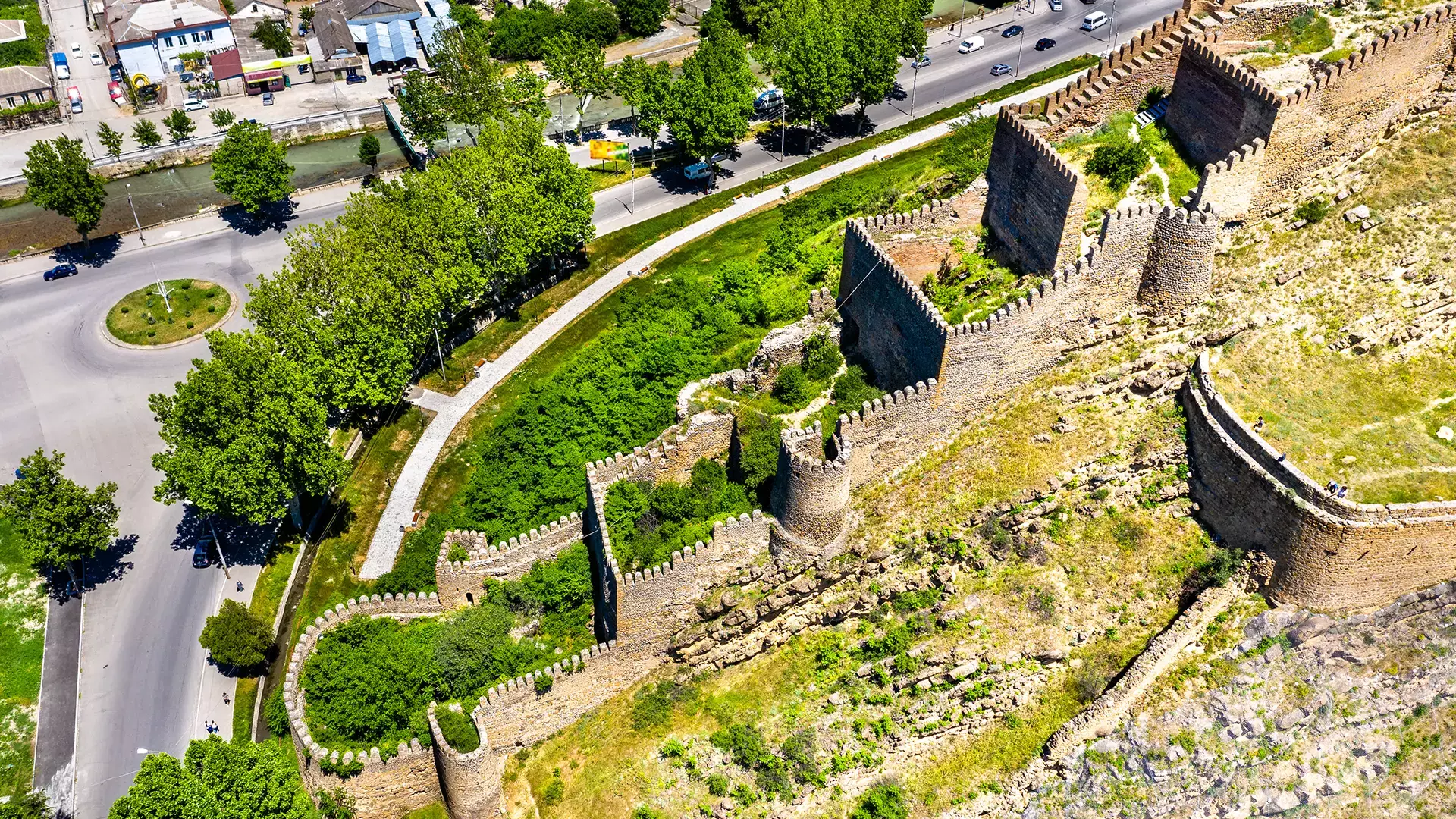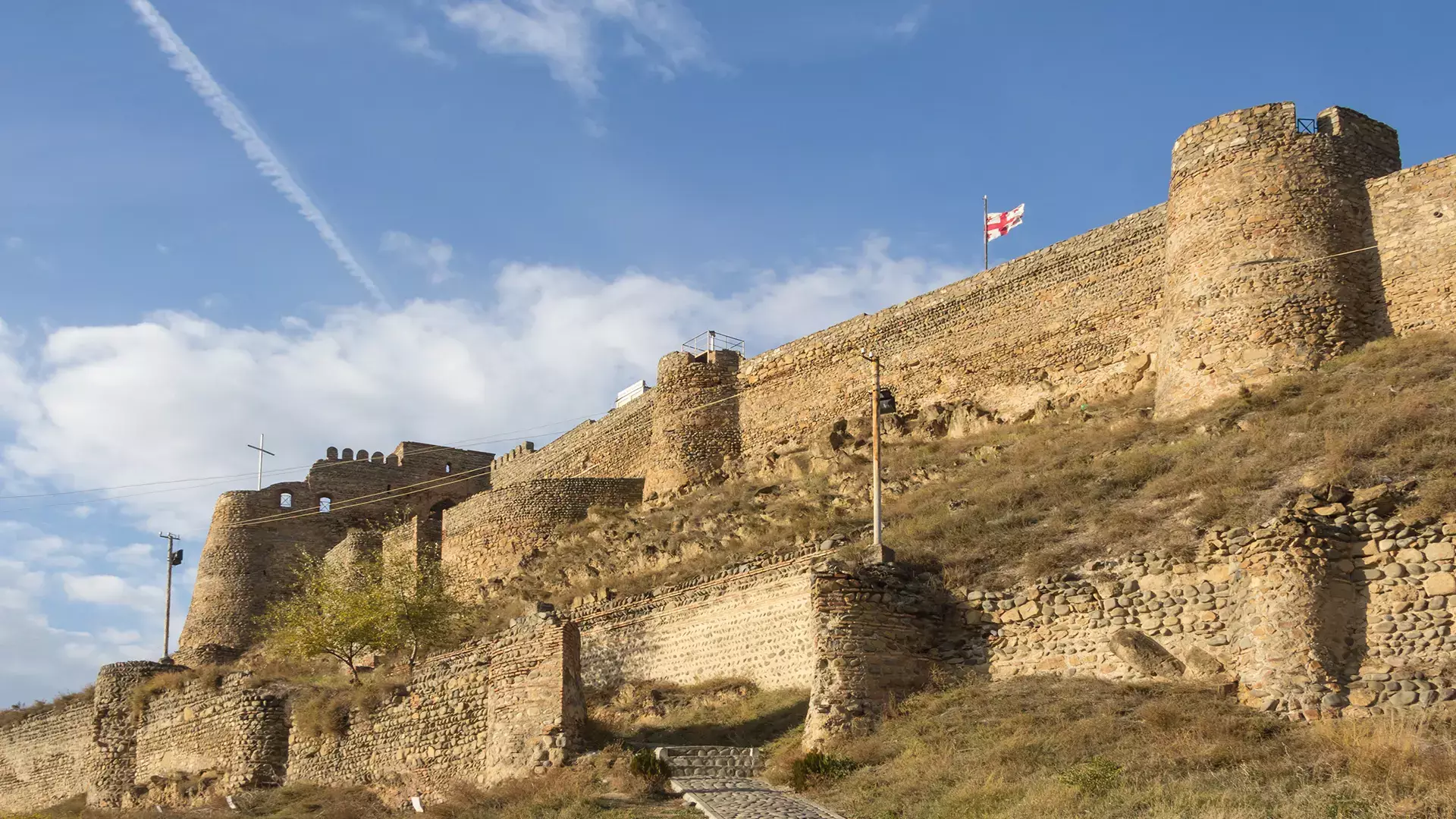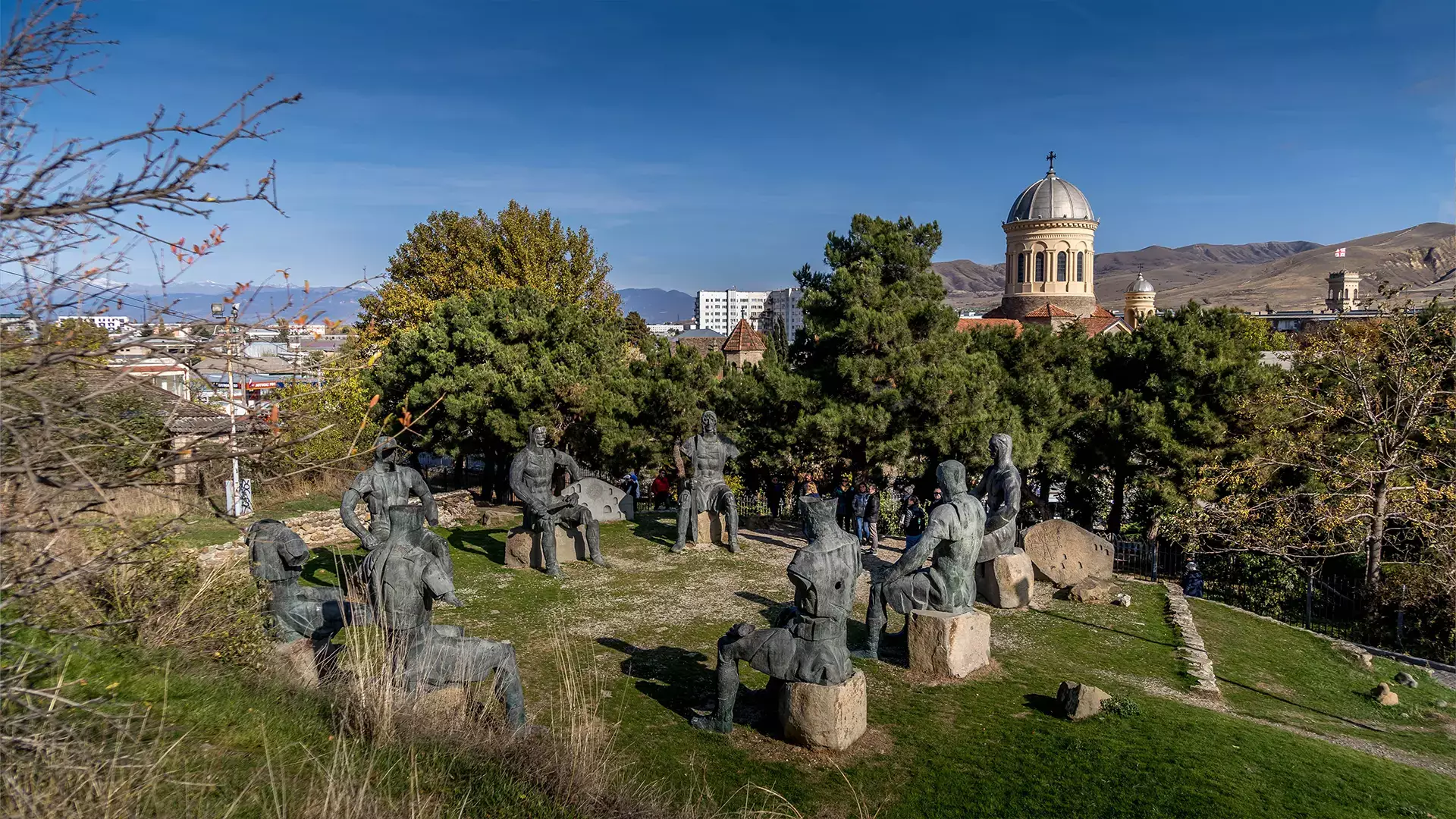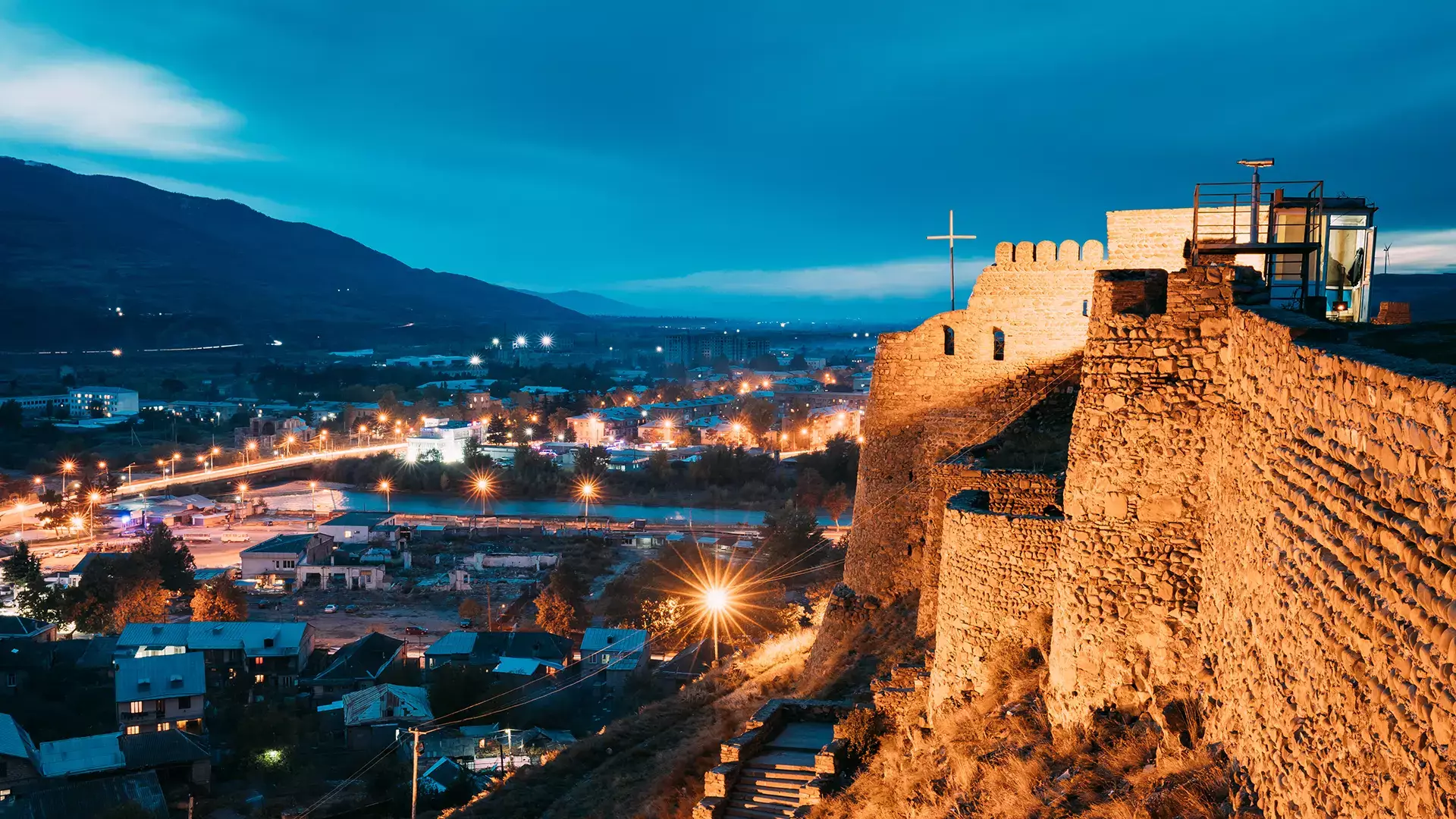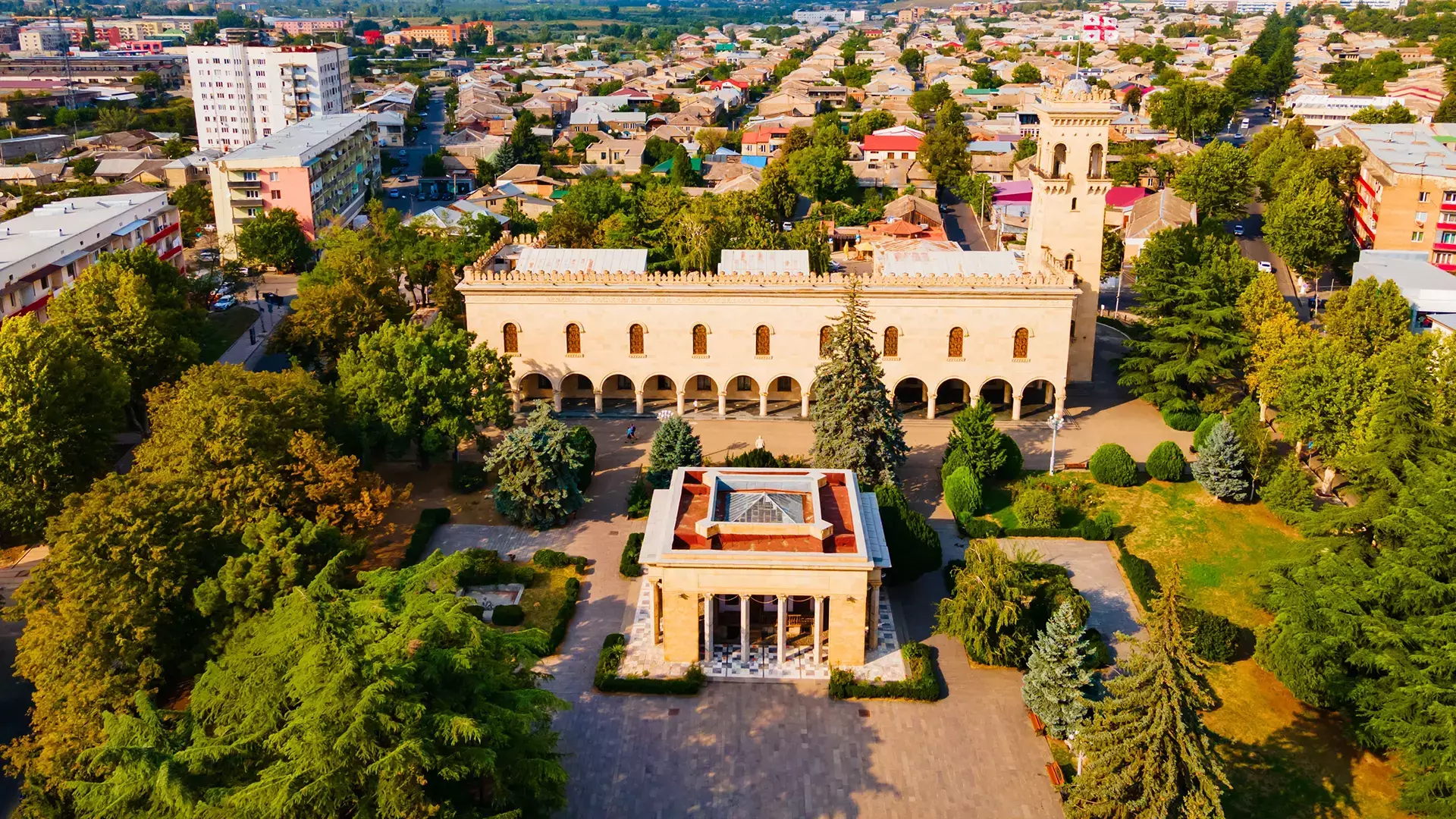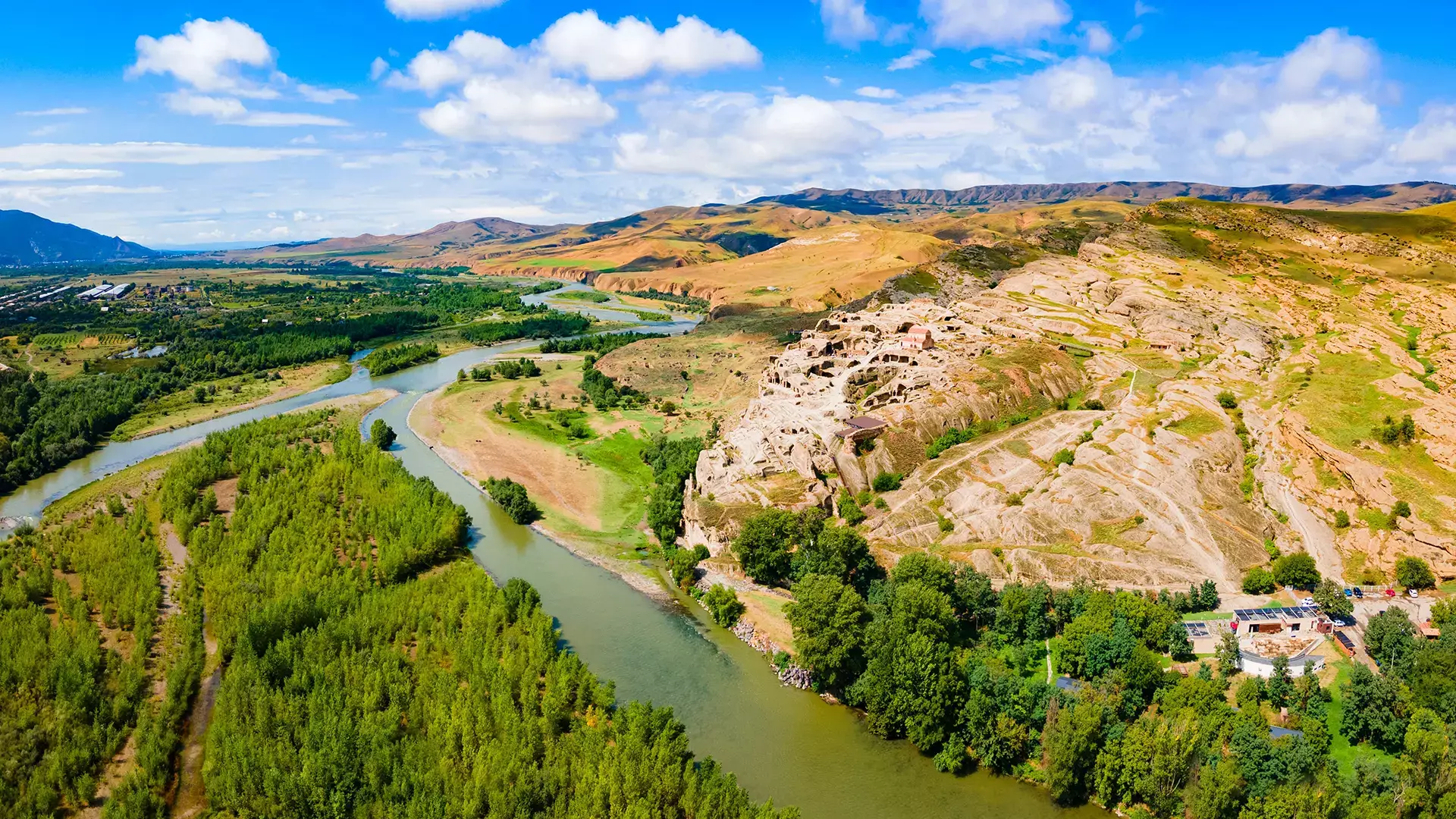Top 11 Things To Do in Gori, Georgia
Is Gori Worth Visiting?
Nestled in the heart of Georgia's Shida Kartli region, the historic city of Gori provides a memorable blend of various eras in Georgian history, from medieval times to the more recent scars of Soviet rule. Two of its main sights, the imposing Gori Fortress erected right in the center of the city and the controversial Stalin Museum, are only a 15-minute walk apart. The museum has been the subject of criticism for occasionally glorifying the dictator’s legacy, however the candid look it gives into his life, work, and wrongdoings continues to attract swathes of tourists every year.
While Gori is (and likely will always be) infamous as the birthplace of Joseph Stalin, this does the place a disservice - there is so much more to this city than one historical figure. In fact, the Stalin Museum isn’t even the most interesting display in the city that houses both a rich collection of medieval relics and some of the most enthralling contemporary exhibitions in the country. Meanwhile, a short venture beyond the city limits will quickly be rewarded with lesser-known medieval ruins that range from defensive citadels to an entire settlement hewn in rocks with a well-preserved labyrinth of roads, halls, and workshops carved into the sandstone cliffs.
Whether you're a history buff, architecture enthusiast, or simply seeking an off-the-beaten-path adventure, Gori promises to captivate and surprise at every turn. And to make sure you make the most of your time here, we’ve put together a list of the top 11 things to do and see.
Explore Gori Fortress
The city’s most recognizable landmark, visible from the motorway several miles away, is Gori Fortress, perched atop a rocky hill right in the center of the city. The construction of the original citadel dates back to the 13th century, although archeological evidence suggests that the first fortifications were built on this hill in the 1st century BC.
The Gori fortress, in its current form, came to be around 1774 when the King of Kartli and Kakheti, Erekle II, had it rebuilt based on the sketches from the previous century drawn by the Italian missionary Teramo Cristoforo Castelli, who lived for a time in Gori.
The construction is surrounded by an oval-shaped wall made from a blend of cobblestones and hewn stones, reaching heights of up to 10 meters. One side of the wall scales down the entirety of the hill. Once, a tunnel ran through these walls and connected with the river running right below the hill (it has long since retreated) so that the garrison could source fresh water.
Gori Fortress is free to access and visitors are allowed to climb around the (restored side of the) walls and explore at their leisure. It’s worth climbing for views if nothing else - some of the most breathtaking sights on Gori open from the top of the citadel.
See The Memorial of Georgian Warrior Heroes
When making your way down from Gori Fortress, spare a minute to visit the Memorial of Georgian War Heroes, one of the most unique monuments in the whole country.
The monument sits at the foot of the hill on which Gori Fortress stands, and consists of eight large bronze figures depicting men in traditional medieval soldiers’ garb. Poignantly, the statues of the heroes are deliberately fractured - some are missing limbs and others faces, while some are clutching swords and others only hilts. They are positioned on stone blocks arranged in a circle, facing each other.
Georgian painter and sculptor Gogi Ochiauri cast the statues in 1981-1985 and called the arrangement “Requiem.” The monument was first placed in Tbilisi’s Vake Park, around the Tomb of the Unknown Soldier memorial. In 2009 it was transferred to Gori.
Visit the Art House Gori Gallery
A 10-minute walk from Gori Fortress lays the Art House Gori gallery. During the Soviet era, this place served as the Castle Museum but fell into disrepair during the 1990s. The Gori Photographers Club restored the building in the late 2010s and turned it into a modern exhibition space, with a primary focus on contemporary Georgian visual art.
Perhaps the most eye-catching feature of the gallery is its shape. A prime example of Soviet modernist design architecture, with several carvings made into its facade, creating a wave-like effect, and then settling into a sharper, block-like shape, somewhat transition from modernism to brutalism.
In contrast, the interior has been rearranged to accommodate the demands of contemporary art exhibitions. It’s a wide circular space with high white walls and a skylight, fit for displaying both traditional media like paintings and photos, as well as comparatively large-scale installations.
The gallery regularly hosts exhibitions of young and emerging local artists, in addition to hosting cultural events. Even for those who aren’t art aficionados, the building itself is well worth the short trek on the way to/from the fortress.
Take a Photo with Lomchabuki Statue
A 2-minute walk from Art House Gori in a neighboring park stands Lomchabuki (or, in English, “Lionman,” though few refer to it as such), the most famous statue in Gori. Well, the most famous one that is still standing, after Stalin’s statue that used to stand in Gori Central Square and was torn down in 2010.
Towering to a combined height of 15 meters, the structure consists of an eight-meter-high pedestal and a seven-meter-high bronze statue of a young man riding atop a lion, pointing south with his right hand and holding a giant sword in his left.
Lomchabuki was a collaborative effort between architect Vakhtang Davitaia and one of the most prominent Georgian sculptors, Elguja Amashukeli (who sculpted some of Tbilisi’s most prominent structures, including the Mother of Georgia and the statue of Vakhtang Gorgasali by Metekhi Church). Initially, its creators named it “Victory,” but soon it became more popularly known as “Lomchabuki” among locals and the name stuck. It won a Bronze State Prize of the USSR in 1979.
Enjoy Local Gori Cuisine (and Wine!)
You aren’t likely to find any fine dining establishments in Gori, and, frankly speaking, you shouldn’t expect to either. Skip the pizza, shawarma, and burgers too, while we’re at it.
What Gori does best is traditional and hearty Georgian food that feels as though it was made by a local grandma. Due to its geography, Shida Kartli region has one of the most diverse cuisines in the country, with quite a wide range of vegetarian and vegan dishes. Various shechamandi (plant-based soups fit for Christian fasts) are popular here, with the wild sorrel, buttermilk, and cornel shechamandis being some of the signature varieties.
But make no mistake, meat and fish-based dishes are widely consumed too. And chief among them is Goruli katleti, a juicy fried cutlet-shaped patty made with a mix of beef and pork (and sometimes mutton) mince. Each restaurant has its signature recipe and they won’t disclose it even under the threat of death. It’s a matter of honor.
Shida Kartli is also one of the most prolific wine-making regions in Georgia, with an abundance of endemic vines. Generally, white wine is more common than red here, but there is more than enough of both to go round. Primarily, in terms of wine, the region is best known for two white varieties - Chinuri and Goruli Mstvane (Gori Green) - both of which are dry but light fruity wines. Fun fact: Chinuri is rumored to have been one of Stalin’s favorite wines. Elsewhere, among the region’s red wines, the most popular is Shavkapito, which is a dry wine with berry aromas.
Go on a Walking Tour in Gori Old Town
The Gori old town is possibly the most overlooked part of the city, with most visitors unaware of it beforehand and thus pleasantly surprised by its discovery.
To be fair, the old town is rather small but well worth a visit. Sprawling on the south and east sides of Gori Fortress, about half a kilometer away. It’s a charming blend of traditional Georgian architecture and Soviet-era influences. Most of the houses are small (two or three stores at most), with bare ornate brick facades, intricate woodwork including doors and balconies, and distinctive cupola windows.
Many of the buildings restored in recent years are located on Akaki Tsereteli Avenue and neighboring streets. After walking (or driving) the entire avenue, turn on to Kirion II Street to get to Gori Cathedral, built at the beginning of the 19th century.
Look for 1001 Georgian Ornaments
An art project by local ceramicist Irina Shotadze, 1001 Georgian Ornaments is a stunning collage of unique hand-painted ceramic tiles on a 21 m2 panel.
Irina gathered local artists and together with them individually hand-crafted and hand-painted each and every one of the tiles. The project took almost a full year. Once finished, the tiles were assembled into a 7-by-3 rectangular panel and put up on a wall display in Gogebashvili Garden (located somewhere between the Memorial of Georgian Warrior Heroes and Gori Cathedral).
According to Irina, no two tiles are the same, or even similar. Irina dipped into various sources to gather the ornaments, including architecture, wood carvings, icons, and textiles (e.g. Lurji Supra - a famous blue tablecloth manufactured in the 17th century).
Visit the Gori Ethnographic Museum
The Stalin Museum may be Gori's best-known attraction, but if you’re short on time, skip a visit to “Uncle Joe” and go to the Sergi Makalatia Gori Historical and Ethnographic Museum instead. Just 300 meters from Stalin Park lies what is arguably the city’s most important cultural institution today.
At first glance, it’s an unassuming two-storied building that one could easily mistake for an ordinary house, if it weren’t for the sign on the wall. Within is a treasure trove of artifacts - a staggering 48,000 exhibits, meticulously curated to showcase the region's history and traditions. The ethnographic display, which includes traditional costumes, household items, and religious relics, is like a window into the daily lives of Gori's past residents, and is particularly beloved by visitors.
But the true standout in this enormous collection is the numismatic display of ancient coins from various countries dating back centuries. One of the more notable parts of the collection is “Gori Treasure” - an assortment of 15th-century gold coins from Turkey and Shirvan (modern-day Azerbaijan), as well as anepigraphic coins of uncertain origin. One of the coins is inscribed “Hijri year 886,” dating the collection to 1481-1482.
Walk Through the Stalin Museum (with a Critical Eye)
There’s no way around it. When in Gori, you’re visiting the city whose main claim to fame (or infamy) is being the birthplace of one of the most ruthless dictators in human history. Therefore, the Stalin Museum is an almost unavoidable part of any Gori expedition.
The Stalin Museum complex includes a modest house where the Soviet dictator was born, a two-story exhibition building with a tower, and Stalin's own personal railway carriage. In contrast to the relatively understated nature of Stalin’s house of birth, the exhibition building is clad in white stone and marble and decorated with carvings and ornate columns. The exhibition itself spans six halls, with over 45,000 historic items on display including documents, posters, paintings, and all sorts of other pieces.
Top tip: check for the availability of an English-language guided tour. Most of the information on display is in Georgian and Russian (but not in English), which can make it difficult for international visitors to get the full experience.
Fair warning: while the museum doesn’t necessarily shy away from Stalin’s murderous legacy, there are some attempts to whitewash it. Unquestionably, there’s a certain level of glorification about his rise to power and rule, while the brutality of his regime is either downplayed or explained away.
Nevertheless, visiting the museum can be a worthwhile exercise in grappling with the complexities of history and politics. The tour is the most intimate look into Stalin's life you’ll get anywhere, but keep a critical eye and ear out for what you are being shown and told.
Explore Tsedisi Fortress Ruins
While Gori Fortress is the city’s most famous historic site (not least because it’s right in the center), there are plenty of other historic remains near the city that should be of interest to those seeking a more off-the-beaten-path adventure.
One such landmark is Tsedisi Fortress. Located about a 20-minute drive from Gori city center, the remains of a 16th-century citadel offer a uniquely immersive experience.
Here, the passage of time has left some indelible marks. Unlike Gori Fortress, which has been partially reconstructed, all that remains of the original Tsedisi are crumbling walls and towers that have largely been left untouched. Meanwhile, the fortress is surrounded by sprawling barren land with not a house in sight, so many visitors get the feeling that time has stopped and that they’re getting a genuine glimpse into the region's medieval past.
There is a small church dedicated to St. George on the citadel’s territory. The historic frescos remaining on its walls certainly deserve a look.
Make a Trip to Uplistsikhe Cave Settlement
One of the most popular destinations in Georgia near Gori is Uplistsikhe. A cave town similar to Vardzia in the south of the country, its oldest parts were hewn from the rocks sometime in the 6th-5th century BC. The newest additions to the complex date back to the Middle Ages.
These days, Uplistsikhe is a historical-architectural reserve and an open-air museum open to visitors. The central part of the remains, the so-called “inner city,” is comparatively well-preserved and includes streets, squares, a water drainage system, four gates, and a secret tunnel that leads to Mtkvari River.
Uplistsikhe reserve is around a 25-minute drive from Gori city center.
How to Get to Gori (as of 2024)
The Distance From Tbilisi center to Gori center is around 90 km. Depending on the mode of transportation, the journey takes between 1.5 and 2 hours.
Meanwhile, the distance from Kutaisi to Gori is approximately 145 km, and the journey can take anywhere between 2 and 4 hours depending on various factors including mode of transportation and traffic conditions.
From Batumi, Gori is around 280 km away, and it takes 4-8 hours to get from one city to the other.
Reaching Gori by Train
Four trains departing from Tbilisi every day stop at Gori station when passing through. Three of these depart in the morning, and one in the afternoon. A train ride lasts around an hour and 15 minutes. From the railway station, the city center is a 10-minute taxi ride or a 35-minute walk away.
From Kutaisi there are also four daily trains that stop at Gori station. However, three of them run from the station connected to Kutaisi International Airport. The schedule from the latter station to Gori is evenly spread throughout the day: the first service departs Kutaisi in the morning, with the second around noon and the third in the evening. The journey takes around 3 hours. There’s another train departing from the old station near Kutaisi city center. But this is a slower service, taking around 4 hours.
Getting from Batumi to Gori by train is a little trickier as there are no direct lines. First, you need to travel to Poti (about a one-hour-drive), and then board the Poti-Tbilisi train departing early in the morning, which will take around 4.5 hours.
Top tip: Train schedules are subject to change. Always double-check the official Georgian Railway website to see which trains are running and when.
Reaching Gori by Minibus (Marshrutka Vans)
The Tbilisi-Gori minibus service runs regularly, with vans regularly departing from Didube station from 8am until 11pm.
This mode of transportation may be less dependable from other cities though. As the vans making trips from Kutaisi or Batumi are usually privately run, they may only be departing if they’ve accummulated a sufficient number of passengers for the trip to be made. Ask locals for more details. .
Reaching Gori by Car
Unsurprisingly, making the trip to Gori is easiest and quickest by car (though not always the cheapest). Situated along the East-West Highway, the main road artery in the country, Gori is easy to reach from all three of Georgia’s main cities and there should be no major hurdles as long as you’re mindful of other drivers while driving.
Rather than driving yourself, you can book a ride with a taxi app like Bolt, which will be the most comfortable but the least budget-friendly option (prices start at 100 GEL from Tbilisi, 150 GEL from Kutaisi, and 370 GEL from Batumi, and they’re subject to change according to the season and demand). Another option is a shared taxi. Generally, they leave from Didube station in northern Tbilisi, and will only depart once all seats are occupied. Again, ask locals where to find them.
Cookie Policy

